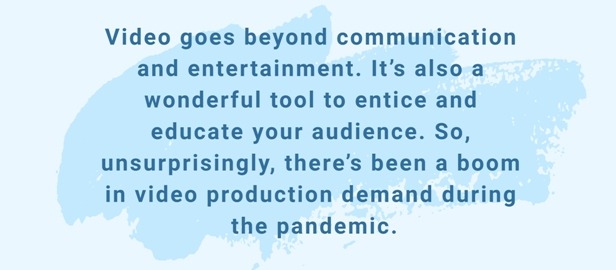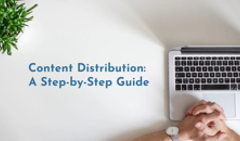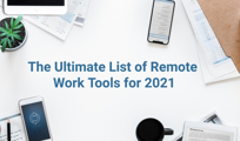Alright, you’ve heard this dozens of times already, but here it goes again: the world has changed. The time we now spend on the web has reached its ultimate high, taking up more than a quarter of our everyday lives. We consume various content on the daily, work with a bunch of online tools from home, educate ourselves using web platforms, communicate with friends and colleagues via Zoom and similar video conferencing platforms.
And it’s not just how we take in content that has transformed—how we deliver it is no longer the same either. Some traditional formats, like good old print copies, had to make way for safer and more progressive digital content. And as people’s needs shifted due to COVID’s notorious social distancing and self-isolation, businesses had to make changes in their content distribution channels. Because no virus can stand in the way of companies trying to keep their audiences happy.
Let’s discuss the transition that some content delivery channels have gone through, and how different professionals have benefited from it. (Because 2020 isn’t all bad, okay!)
#1 Printed Materials
We’ll start with the channel that has suffered a more drastic change than others—print. This traditional content distribution channel basically plummeted into oblivion during the pandemic. Considered unsafe, physical copies of magazines and catalogs are replaced with their digital equivalents in a variety of formats: PDFs, Google docs, ebooks, digital flipbooks.
Luckily for printing, it’s been around long enough for people not to abandon it entirely. Once things go back to normal, printed books and magazines will be widely used again. However, mixed together with their digital comrades, physical copies are likely to become an additional asset rather than a go-to content delivery channel.
To be fair, the troubles of print copies didn’t start overnight. Take magazines, for example. Most industries that produce them—fashion, manufacturing, education, real estate—saw the drawbacks of printing even before the global pandemic hit them. Physical copies take a lot of money and man-hours to produce, and they’re far from harmless for the environment. Is killing thousands of trees for the visual joy of a business magazine really worth it?
While the pandemic has obviously shaken the whole world, it’s also opened our eyes a little wider toward the dangers of printing. And if, as a content distribution channel, printing now moves from being somebody’s first choice to their second, or even third, it’s a small win for us all, let alone the environment.
#2 Digital Flipbooks
It seems only natural to mention digital flipbooks after printed books. After all, the former is often used as a substitute for the latter. Flipbooks are a convenient way to distribute content: you can deliver them anywhere as direct links, and they work equally well on any device. Also, the format is very engaging with interactive elements, and it resembles a print copy thanks to its authentic look and feel. Check out this one created with FlippingBook:
Create yours
Widely used even before COVID-19, flipbooks have surged in popularity in 2020. The reason behind it is simple: everyone needs a fast, seamless tool to communicate online these days, and that’s what flipbooks give you. And if before some businesses used online flipbooks for one or two content types, now they’ve converted more of their documents from PDFs to flipbooks.
Digital flipbooks have proved to work particularly well for educators. In the pre-COVID-19 world, universities and schools used digital flipbooks for marketing purposes. Offering school magazines, prospectuses, alumni newsletters as flipbooks engaged their audience and made them stand out among other schools. But the move to online lessons via Zoom raised the need to digitize teaching materials as well. How do you make a textbook instantly available to multiple students? Send it as a link. This has been a hit among teachers who struggle to work out new technologies, because flipbooks are intuitive to create and share.
What’s more, if you’re a teacher who wants to deliver the best content to students but can’t quite afford it during these hard times, talk to us. We value the work you’re doing and are always happy to help.
#3 Video
COVID has turned video into one of the most popular communication channels, drawing millions of people to services like Zoom and Microsoft Teams, and other video conference apps. And then there’s Netflix and other streaming platforms that have had new subscribers hooked since the first lockdown.

But video goes beyond communication and entertainment. It’s also a wonderful tool to entice and educate your audience. So, unsurprisingly, there’s been a boom in video production demand during the pandemic. Videos deliver your message by combining a variety of techniques (animation, montage, screencast, storytelling) as well as triggering several senses with narration, music, visuals, subtitles, sound effects. This ensures that your message can’t go unnoticed.
In search of enticing animation videos that deliver the right message quickly, a lot of businesses have turned to Viddyoze. The company’s clientele grew six-fold within the first month of the lockdown, and it keeps on growing. Why? Because smart animation enlivens any content you distribute, dragging customer attention exactly where you want it.
And many SaaS companies have turned to video as a means to educate their customers. Isn’t it brilliant? Video as a part of your content distribution strategy gives you so much space to be creative. For instance, initiate workshops and webinars. Can invite industry experts to speak on your behalf or cover a topic relevant to your target audience? Score! And then there are video tutorials or even whole educational courses on how people can use your SaaS product. These fit well in help center articles and in emails from your support team, and they can bring life to your YouTube channel—just check out Zapier’s. The company’s idea for Zapier University is a fresh take on assisting your clients in understanding your tool better.
#4 Blog
Writing quality content that people want to read requires both talent and strategic thinking. What should the message be? Which keywords will help people find it? How and where should you advertise your blog?
With so much to think about, you might not have enough time to write, write, write—no matter how strongly you want to. And since your blog is a powerful content delivery tool, it’s important to keep a steady flow of new articles coming in at all times. This is especially true when things change as rapidly as they have been in 2020: you have to write enough copy to stay on trend, jump on the hype wagon if you can, and foresee what your audience will need soon.
So what have content marketers been doing with their gorgeous informative blogs? Stuffing them with incredible articles from around the globe, of course.

The pandemic has turned active B2B blogs into hubs for guest posts flooding in from various industries, fellow marketers and experts. It’s an incredible opportunity not only to exchange knowledge and valuable backlinks, but also to network. Guest posting allows you to meet people of different backgrounds and from different countries, publish their insights on your blog, and then write your own articles for their sites or even those of their partners.
Keep in mind that guest posting and backlink exchange don’t have to be a paid resource for distributing your content. A lot of companies treat this channel on a quid pro quo basis, and are right to do so. Why shouldn’t two high-ranked blogs exchange quality content? It’s a win-win scenario: both companies expand their audience and raise brand awareness while generating backlinks and building a strong partnership.
#5 Newsletters
Multiple content distribution channels have seen a spike in engagement during the COVID-19 crisis, and newsletters aren’t an exception. Not every kind of a newsletter gets the increased attention, though. But if you include the right content—and the right formats—in your emails, they’ll get a good share of open and click-through rates. Health and fitness emails may be seeing a 34% increase in engagement, but that doesn’t mean B2B newsletters can’t get a slice of that pie. Perhaps, including a Safety Tips section in the content of your email will do the trick?
It’s not just what you’re saying that matters, but also how you’re delivering your content. Basically, two types of weekly blasts are fighting for dominance these days: your typical marketing newsletters and editorially curated podcasts. It’s a war neither can really win, because their target audiences don’t overlap. Podcasts attract much younger audiences than email newsletters. Here’s why: the former offer a greater variety in terms of voices and narrative, and they keep people listening on the go for extensive periods of time. No wonder podcast consumption has grown by 42% in the US and by 53% in Europe since the beginning of the pandemic.
Whether you decide to include podcasts in your emails or stick to written copy combined with interactive elements (images, GIFs, videos), make sure your newsletter is compelling. Distributing content that keeps your audience on their toes is a craft worthy of a medal. And podcasts are a great source of edutainment and engagement with their varied topics and length, while emails, both short- and long-reads, can be a harder arrowtip to sharpen.
But don’t worry—you can still shoot well with your standard newsletters. Just look at this amazing long-read by Tonic Site Shop—it started off as a newsletter but was later turned into a blog post. This idea alone is awesome. The newsletter brings unputdownability in lengthy emails (undeletability?). It draws the reader in with a personal, on-trend story and then drops the selling content effortlessly both in written and video formats. That’s the recipe for good emails in 2020: don’t let the current issues slip away, deliver content in multiple cool formats within the newsletter, and aim well with carefully placed pitches and CTAs.
There’s a Bright Side, Always
Changes don’t have to be a bad thing, even when they’re imposed by a global pandemic. Content distribution channels always follow the latest trends, because otherwise they simply wouldn’t work. So adaptability is key when you work with content and want to deliver it to the audiences that need it.
The pandemic sure has transformed how we create and distribute content, as well as how our clients consume it. That’s basically evolution, so don’t be the one to fall back in fear of changes—thrive in the multitude of new ways for your creativity to be shared with your customers. And if it gets a little overwhelming at first, take baby steps: start with your content distribution strategy, and move to success afterward.






